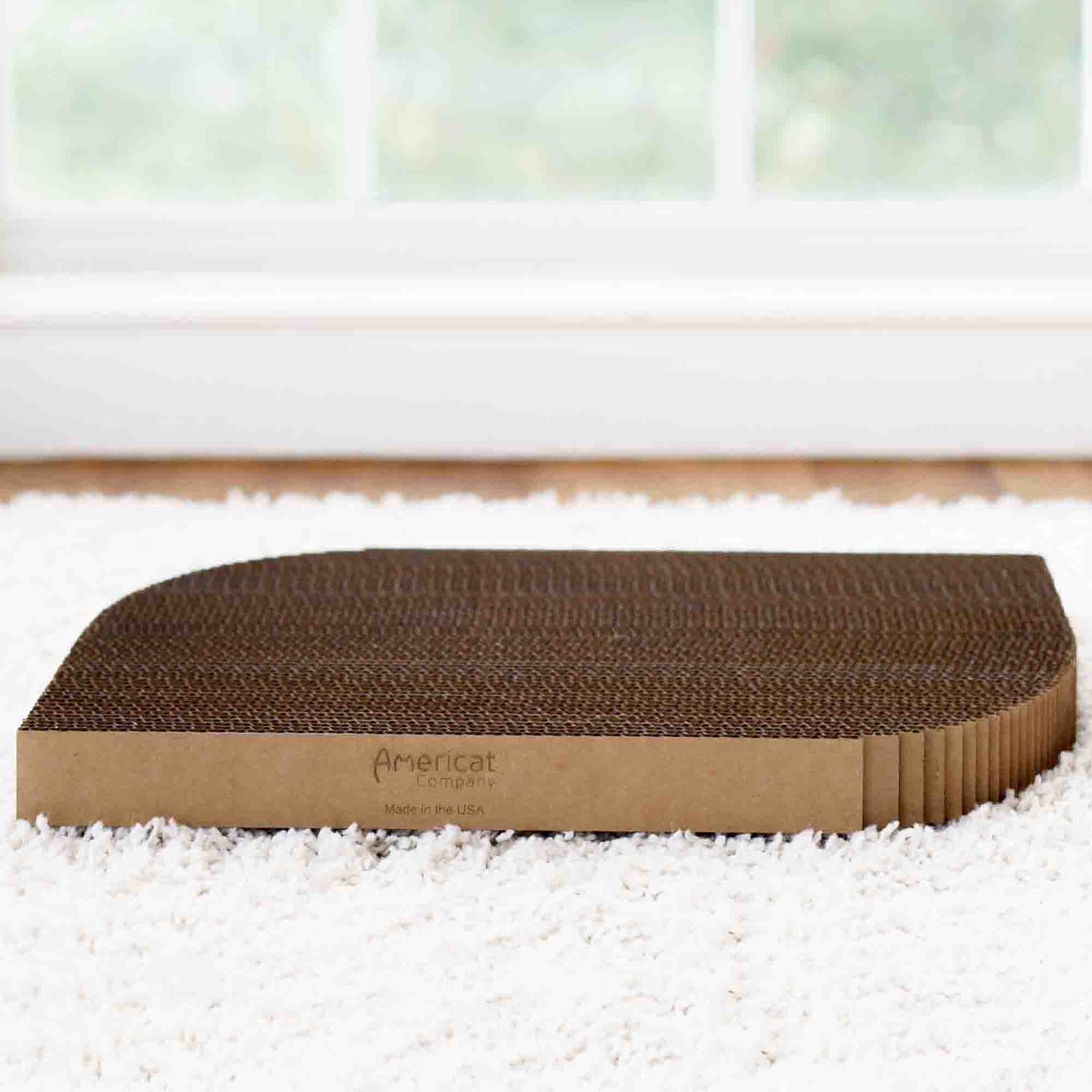You’ve researched the best cat food, but have you thought about the best cat bowl?
Cats use their bowls multiple times per day every single day! Cat bowls are one of the most important products that you will buy for your kitties. So, it's important to carefully select the right type!
Our goal at Americat Company was to create the best and safest cat bowls. So first, we diligently researched and contrasted the different material options: stainless steel, ceramic, and plastic.
We analyzed the different materials and gave each cat dish material a grade based on safety, design, and overall performance. Based on our findings, we chose to create these stainless steel cat bowls.
Here we are sharing what we learned about the pros and cons of stainless steel, ceramic, and plastic cat bowls to help you pick the best cat bowls for your kitties.
Pros and Cons of Stainless Steel Cat Bowls
+ Sanitary and germ-resistant, because bacteria cannot enter hard, non-porous surface
+ Unbreakable
+ Long-lasting and won’t easily scratch despite constant use
+ Won't easily stain or rust
+ Easy to clean and dishwasher safe
+ Attractive, modern look
- Quality may vary depending on grade of stainless steel
Grade: A
Rationale: Based on our testing, stainless steel cat bowls are best. Frequently used in medical equipment and in cooking because of its antibacterial qualities, stainless steel is safest for cats. Its cleanliness and durability cannot be beat.
However, not all stainless steel cat bowls are created equally. Some bowls made overseas have been found to contain lead and other radioactive metals. Also, there are hundreds of grades of stainless steel, so quality can vary greatly.
Once we determined that stainless steel was the safest material for cat bowls, we researched the different types of stainless steel bowls. Here are 5 tips for choosing the best stainless steel cat bowl.
These are the stainless steel cat bowls we trust for our own cats. They are made in the USA in a facility that also makes healthcare and culinary products. They are made from 18/8 304 series stainless steel, and after manufacturing, each batch is tested and certified to be free of lead, mercury, and cadmium by an independent lab accredited by the Consumer Product Safety Commission.
Pros and Cons of Ceramic Cat Bowls
+ Can feature fun, artistic designs
- Can develop chips or cracks, which harbor bacteria similar to plastic cat bowls
- Can shatter and break easily. Sharp shards can injure you or your cat
- Glaze may contain lead or other toxins that are not foodsafe

Grade: C
Rationale: Ceramic cat bowls are safer than plastic. But, their fragileness, ability to harbor bacteria if not glazed properly, and potentially toxic paint make them a gamble.
Pros and Cons of Plastic Cat Bowls
+ Inexpensive given light weight
- Can become a breeding ground for bacteria. Plastic cat bowls develop scratches over time. Scratches and plastic's porous surface trap bacteria, which thrive on leftover food and saliva
- Cannot be fully cleaned. Washing only cleans smooth surfaces, not bacteria within tiny scratches
- May cause cat acne. A cat's chin can become inflamed and infected from bacteria on plastic bowls
- May contain BPA, phthalates, and other toxins that can leach into food

Grade: F
Rationale: Although plastic cat bowls can be inexpensive, you get what you pay for. They pose many risks. Cats can develop an infection or feline acne from bacteria in the cracks of a plastic bowl. Plastic bowls may also contain BPA, phthalates, and other potentially harmful toxins, so they are not the best cat bowls.
If you'd like to read more about plastic cat bowls, here is an article about whether plastic cat bowls are good or bad for cats.
Recommendation: Stainless Steel are the Best Cat Bowls
After researching the pros and cons of different cat bowl materials, stainless steel are the best cat bowls. Unlike plastic and ceramic, bacteria from leftover food and saliva cannot enter stainless steel's hard surface, so stainless steel cat bowls are more sanitary. They are also more durable and easier to clean.
But, Choose the Right Stainless Steel Bowl
The quality of stainless steel cat bowls can vary dramatically. At a minimum, be sure to investigate:
- Country where the cat bowl is manufactured
- Grade of stainless steel
- Non-toxic certifications
- Whether the bowl is whisker friendly
- How to clean the bowl
Learn more in our article, "5 Tips for Choosing the Best Stainless Steel Cat Bowl."
My Cats' Favorites: Americat Company Stainless Steel Bowls
We love these stainless steel cat bowls, because they are Made in the USA from 18/8 304 series, U.S.-sourced, stainless steel. They are non-toxic (free of lead and other radioactive metals as certified by a 3rd party lab) and are dishwasher safe. Our cats Penny and Bella love that these bowls don't hurt their whiskers, are sanitary, and are built to last so they can enjoy them for a long time.
About Us: Americat Company is where love for cats meets American craftsmanship. Founded in 2016, we are a cat-loving, woman-owned, small business. We make cat products in the USA from safe, durable, U.S. materials. Shop all our made in the USA cat products here.








